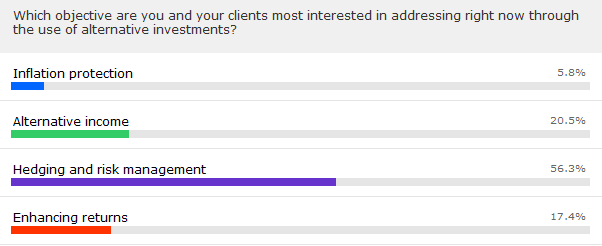Savvy seek shortterm gains from inverse ETFs
Post on: 2 Апрель, 2015 No Comment

By Matthew Vincent
New “short” exchange traded funds (ETFs) are being launched in the UK to provide a low-cost way to profit from falling markets. But advisers warn that these daily “inverse” index trackers are too risky for most private investors to use for hedging a portfolio.
More
On this story
IN Investments
Lyxor, the ETF subsidiary of Société Générale, is currently working on a short FTSE 100 tracker that will provide inverse exposure to the UK market for domestic investors. It will follow the successful launches of Lyxor’s short trackers on the French, German, Italian and Spanish markets.
Meanwhile, ETF Securities has expanded its range of short and leveraged ETFs to include 10 equity index trackers, 30 currency trackers and 66 commodity
trackers ETPs and 10 Equity benchmarks. Of these, the most popular have been ETFX Dax 2x Short, ETFS Short Oil, and ETFS Short Euro.
In simple terms, the prices of these short ETFs move in the opposite direction to the prices of conventional ETFs. So, if the S&P 500 index falls 1.2 per cent in a day, the short S&P 500 ETF will rise 1.2 per cent and the two-times leveraged short index will rise 2.4 per cent. ETF providers generate these positive returns
or by using futures contracts. But if a conventional index rises, a short ETF will fall in price by the same amount, or double if leveraged.
Deutsche Bank says its short ETFs are designed for “financially sophisticated investors” who want to use them for short-term hedging strategies, or to take advantage of declining markets. “As they are ETFs, they are easy and convenient to use and can be traded and settled in the same way as any listed stock or security,” says head of db x-trackers Manooj Mistry. Apart from share-dealing costs, they carry total expense ratios of just 0.5-0.6 per cent. “For some investors, they can be an effective substitute for other short-term derivatives such as futures, contracts for difference or spread betting ,” says Mistry.
Isabelle Bourcier, global head of ETFs at Lyxor, says that its short ETFs have proved popular with private investors in Europe. She notes that Lyxor’s XBear Cac 40 ETF, which inversely tracks the French equity index, is “one of the most traded products on EuroNext.”. In May, it was the second most traded share on the exchange, accounting for an average of 2,725 trades a day worth €75m over the month. A short FTSE ETF is now planned. “This is something we have been working
on for a long time,” says Bourcier.

But UK investors are already using ETFs to profit from market falls. Earlier this week, Barclays Stockbrokers reported record levels of ETF trading, with volumes up 52 per cent year on year – and the second most traded fund among its clients was ETF Securities’ FTSE 100 Super Short Strategy tracker. Adrian Lowcock of advice firm Bestinvest has seen an inverse relationship between trading levels and index levels. “With markets having come off their recent highs, demand for short products has been rising in recent weeks.”
However, both the ETF issuers and advisers warn that short ETFs can amplify losses in volatile markets if held for more than a few days – because they track daily returns and, on a daily basis, the compounding of losses has a greater effect than the compounding of gains.
“Short and leveraged short ETFs are a mathematical disaster, unless held for just a single day,” warns Andrew Wilson, head of investment at advice group Towry. “Unless the market moves in a straight line you are going to perform less well than you had imagined.”
He cites the examples of a double leveraged short ETF based on the FTSE Xinhua China 25 index. This index fell 34 per cent in four months, after the Beijing Olympics – but, rather than deliver a 68 per cent gain, the ETF made a 56 per cent loss.
“I would only recommend experienced, sophisticated investors to consider using these products as misuse could seriously damage a portfolio and unintentionally add risk,” says Lowcock.
He advises less experienced investors seeking a hedge against falling markets to buy an absolute return fund, such as Standard Life Global Absolute Return Strategies.














